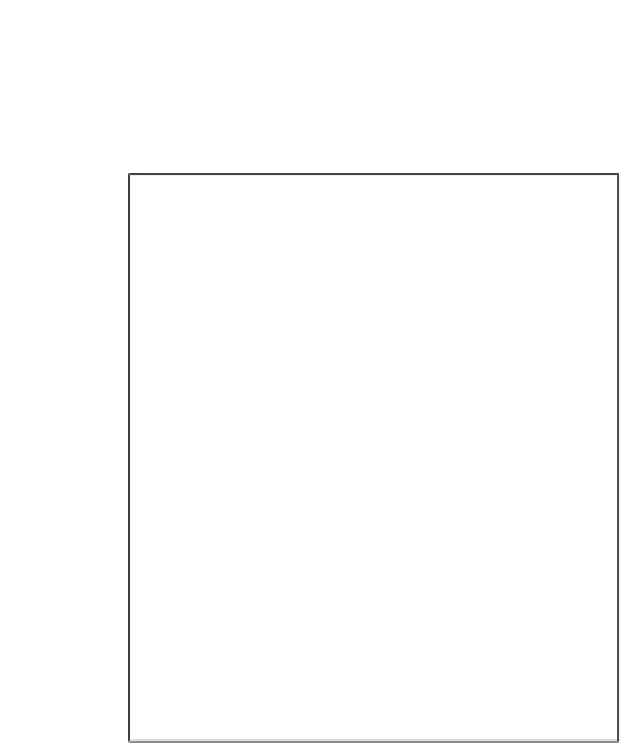Agriculture Reference
In-Depth Information
Table 7.2
Number of genotypes (per 1000) that would be
selected in both stages of a two-stage selection scheme (
b
val-
ues in Figure 7.6) based on inverse tetrachoric correlations
from different selection intensity and correlation coefficients
of
r
in both stages. From this the selection ratio would be
[
/
]
/
[
/
]=
11.19. Therefore a genotype
selected in the first year would be more than 11 times
more likely to be re-selected in a second year than a
genotype discarded in the first year. Therefore despite
the Type I and II errors, with a correlation between
stages of
r
93
107
57
743
=
0.1, 0.2, 0.3, 0.4, 0.5, 0.6, 0.7, 0.8 and 0.9.
Year 1
=
0.7 then selection is more than effective
at these selection intensities.
It is interesting to try the same operation with:
0.05
004 005
007 009
012 016
020 025
032
Uniform selection intensity and varying correlation
coefficients
•
0.10
007 009
012 016
019 024
029 035
043
013 017
022 027
032 039
047 056
069
•
Uniform correlation coefficient and varying selection
intensity
0.15
010 013
017 020
025 030
035 041
047
019 024
030 036
043 051
059 070
083
028 035
042 049
058 067
078 091
108
Inverse tetrachoric correlations can also be used in
a similar way to determine the association between
selection for two different characters if the correlation
coefficient between the traits is known.
0.20
013 017
020 025
029 034
039 044
049
025 031
037 044
052 060
069 079
091
037 044
052 061
070 081
093 107
125
048 057
066 076
087 099
113 129
150
APPLIED SELECTION
0.05
0.10
0.15
0.20
Year 2
Selection in a plant breeding programme is an operation
which is carried out over several years. After genetic vari-
ation is created, then a population of genotypes will be
evaluated under different environmental conditions. At
each stage the '
most desirable
' lines are selected, while the
lines with defects or that are less desirable are discarded.
For simplicity the various stages of selection can be
divided into three types:
From the fact that we selected 20% in year 1 and
with 1000 genotypes this would have resulted in 0.2
×
=
1000
200 selected in total, then the number of geno-
types selected in year 1 and discarded in year 2 (
c
,in
Figure 7.6) would be 200
−
=
93
107. Therefore that
/
=
Type II error would be 107
0.535, or 53.5% of
genotypes selected in year 1 will be discarded in year 2.
Similarly, 15% (
p
2
=
200
•
Early generation selection.
This is the first stage
where the initial unselected population is screened.
In most programmes this critical stage can involve
many thousands of individuals (Figure 7.8).
0.15) were selected in year 2.
So given that 1000 genotypes were screened, this would
result in 1000
150 genotypes selected in
year 2. From this we have that 150
×
0.15
=
57 genotypes
would have been selected in year 2 which would have
been discarded in year 1. Therefore the Type II error
is 57
−
93
=
•
Intermediate generation selection.
After the least
adapted lines have been discarded more detailed eval-
uation of lines is carried out. Intermediate selection
usually involves hundreds, rather than thousands of
lines.
0.380 or 38% of all selections made in
year 2 will have been discarded in year 1.
It can be seen therefore that even with relatively
high correlations between different years of evaluation
(i.e.
r
/
150
=
Advanced generation selection.
At this stage the ini-
tial population has been reduced such that only tens
of lines have survived. Trials in the advanced selec-
tion stage are most accurate and detailed, including
multiple location evaluation trials.
•
=
0.7) there will be a high potential selection
error.
By subtraction we have that 1000
−
(
+
+
93
107
)
=
=
57
d
743, the number that would be discarded






























